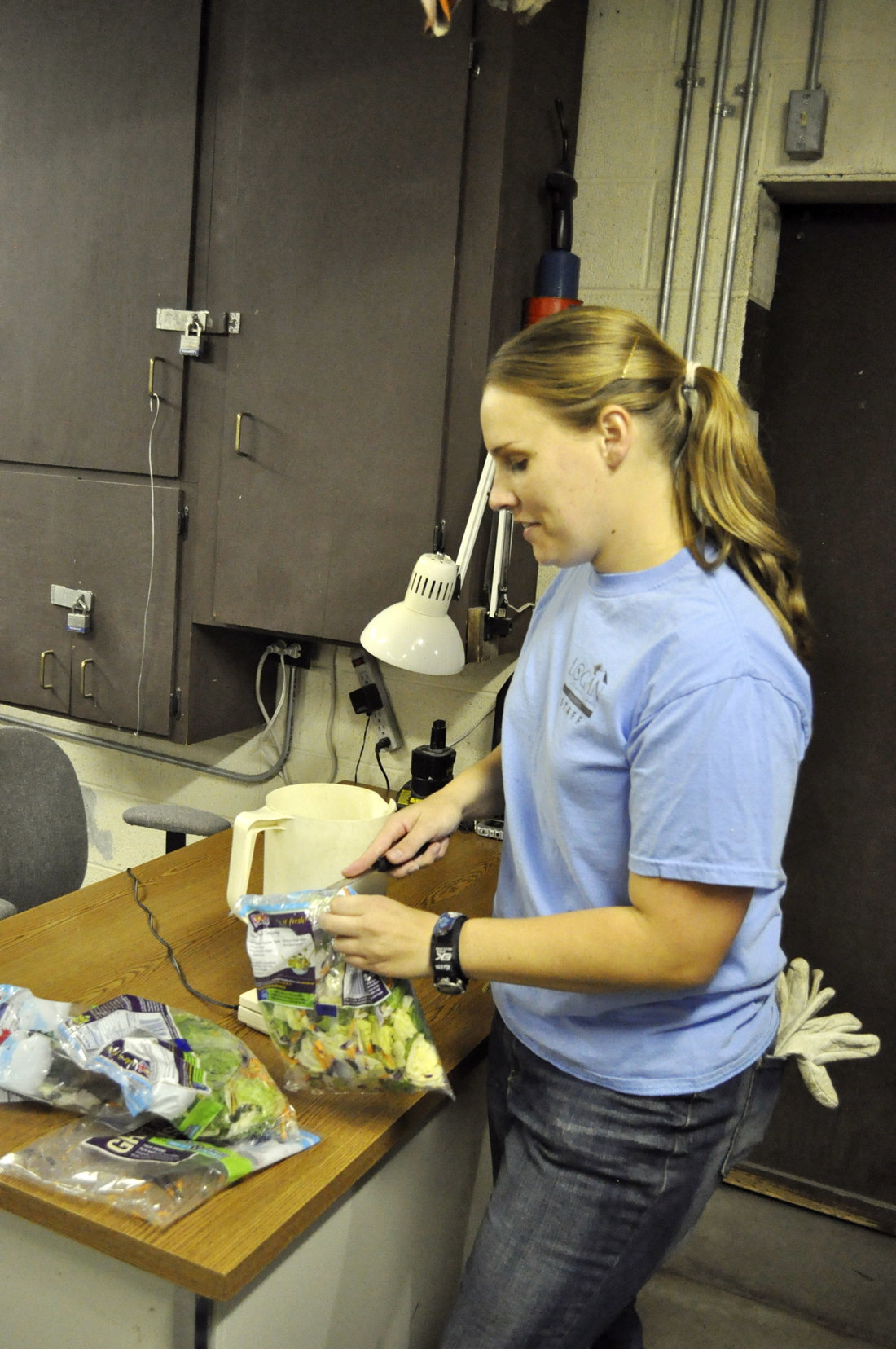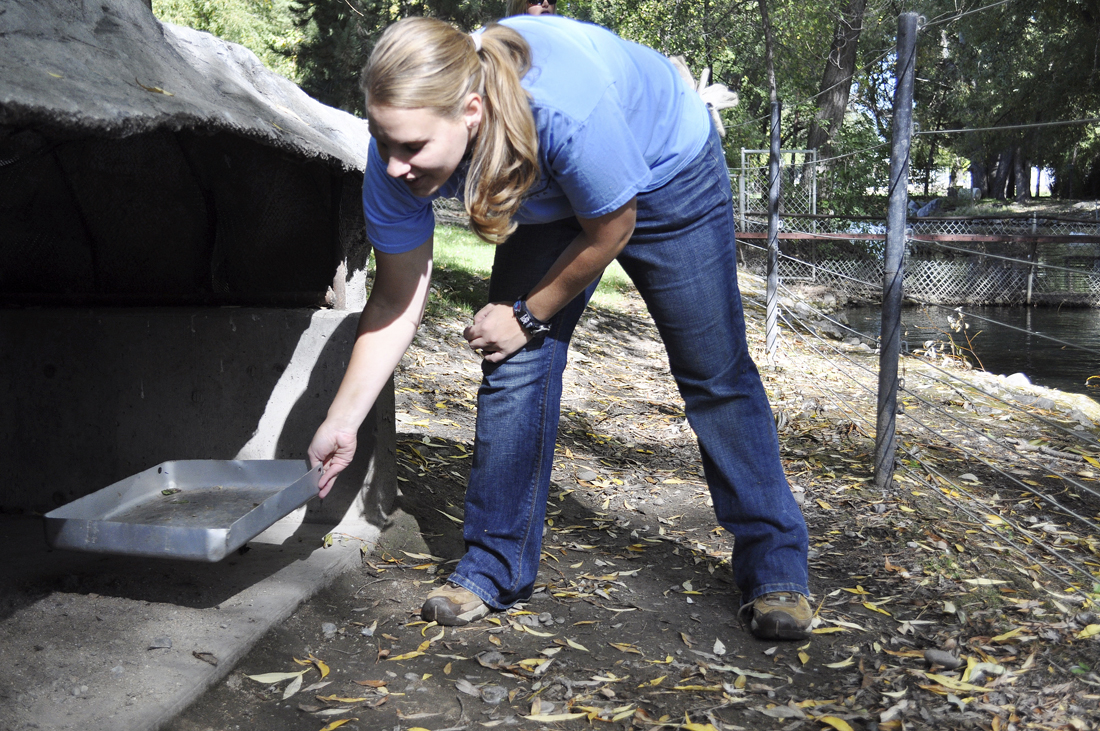Tails of a zoo keeper
For Michelle Sagers, being a zoo keeper at Willow Park Zoo is more than just a walk in the park.
“This job is a lot of work but I love it because I get to apply what I am studying,” Sagers said. Sagers is a junior at Utah State studying animal science.
Every morning, Sagers comes in and unlocks the zoo and counts the money from the day before. Next she does the feedings for the animals. each of which has a specific diet. Sagers has to make sure the animals get what they need and the right amount of it.
“I have to go and check on the animals, too, and make sure everyone is alive and well,” she said.
Sagers said she occasionally finds deceased animals. When she does, she either has to find out the animal’s cause of death or dispose of the creature.
“It is a natural part of life. It is something I have had to get used to and be prepared for but I still feel bad when an animal dies,” Sagers said.
After the feeding and checking on the animals, Sagers does some basic maintenance around the zoo. She fixes fences, changes the water and cleans the animal pens.
She said her first day, three years ago, was filled with excitement rather than anxiety.
“My trainer showed me how to feed the animals and I was so excited to be working at the zoo that I wasn’t nervous at all,” Sagers said.
Though animals don’t escape often, Sagers said a dove got loose once. Sagers said the dove was difficult to catch and she had to chase him around until she finally cornered him and could return him to where he belonged.
Sagers said if an animal does become loose, there are certain procedures zoo keepers must go through. The things they do depend on the type of animal that gets out. If it is a non-threatening animal, zoo keepers will track it down and put it back in its cage. However, if it is a threatening animal and could hurt any of the visitors, they have to shut down the zoo until the animal is found and put away.
Sagers said she has never felt threatened by any animal, but mention an experience with the zoo’s raptor, or birds of prey like hawks an eagles. She said she was taking some meat into the raptor pen, the raptors flew at her and she had to toss the food away.
“They weren’t trying to attack me, I just had their food and they were flying towards it, but it was still scary,” she said.
Zoo keepers have to learn animal behaviors so they can predict how the animal is going to act. Sagers said they also have to learn how certain animals react to different situations so the zoo keepers can keep themselves safe.
“There is a pheasant that always tries to get out. He is always waiting right by the gate and tries to run out when I open it,” she said.
Another part of Sagers’ job is to patrol the zoo and make sure that the visitors are behaving properly. She has to make sure no one is feeding the animals and that they don’t bring their dogs into the zoo. Sagers also has to make sure that the restrooms are clean, which she said is the worst part of her job.
“The people restrooms are worse than the animals’ restrooms,” Sagers said.
Sagers said she has also learned how to work with birds since she started working at the zoo. Previously, she had only worked with farm animals but now has experience in a wide range of animal care.
“I love all the animals in the zoo, but I enjoy the deer and the wallabies the most, I think,” Sagers said. “Before I had this job I worked at a laundromat and it was miserable, but I love this job so much. I love working with the animals.”
– chelsee.niebergall@aggiemail.usu.edu

Michelle Sager, junior in animal science, feeds the wallabies at the Willow Park Zoo, left. Below, Sagers prepares a meal for the monkeys. Sagers has been working at the zoo for three years. Sagers said she has never felt threatened by the animals but has had some nerve-racking experiences. BRECK BYINGTON photos

